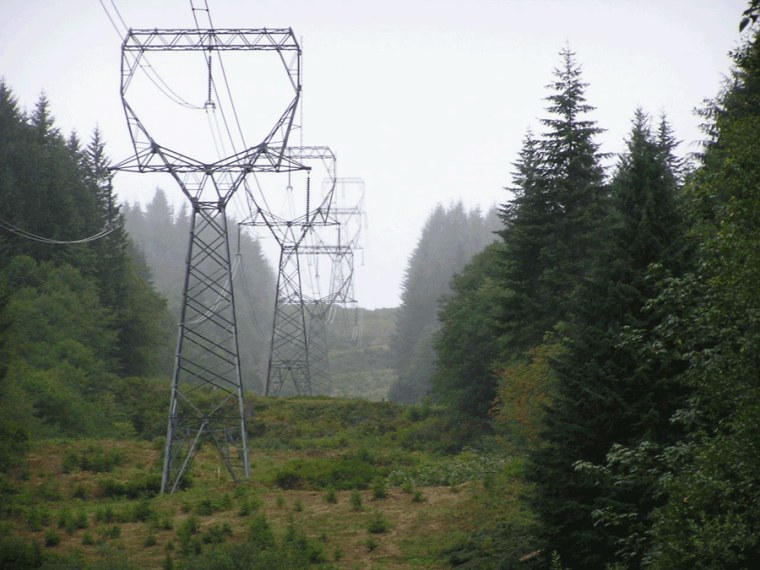Environmentalists are expected to challenge proposed Western energy corridors where new electricity transmission lines and pipelines for natural gas, oil and hydrogen could one day ferry energy from wells or power plants to the region's cities.
Plans unveiled Friday show corridors crossing 11 states and covering thousands of miles, stretching from Washington to Wyoming and Montana to California.
The West has seen unprecedented growth in oil and natural gas production, wind prospecting and plans for new coal-fired power plants in states including Idaho, Wyoming and Nevada. In the 2005 federal energy bill, passed last August, Congress ordered these corridors to expedite upgraded and new electricity transmission facilities.
Officials from federal agencies including the Forest Service, the Department of Energy and the Bureau of Land Management drew up the proposed power thoroughfares, in part based on comments from environmental groups and the energy industry that were given at meetings last October.
They attempted to avoid crossing national parks and monuments, and say that just one — the southern portion of the Lake Mead National Recreation Area in Nevada — is bisected.
"We tried our best," said Scott Powers, a BLM official helping oversee the effort. "At Lake Mead, there's an existing facility, and we're just proposing to expand that."
The energy bill calls for the corridors to be in place by August 2007.
Friday's maps were only preliminary; a draft environmental impact statement on the corridors is due out later this year.
Wildlife concerns
Some environmental groups, including the Sierra Club and The Wilderness Society, have expressed concern that these corridors — slated at least preliminarily to be as much as two-thirds of a mile wide — could disrupt areas with sensitive wilderness or animal populations.
On the maps, they skirt the northern and southern borders of the Mojave National Preserve in California, along U.S. Interstate 15 and Interstate 40. There's another at an existing pipeline near the McNary Wildlife Refuge in Washington state, as well as just south of the Craters of the Moon National Monument in Idaho. Corridors also are shown not far from Canyonlands National Park in Utah.
Nada Culver, in The Wilderness Society's Denver office, said her group favors identifying swaths of land where energy transmission infrastructure could be concentrated in areas where it's least harmful to the environment.
However, Friday's release of the low-definition maps left her scrambling to pinpoint exactly where the corridors are proposed. Culver also expressed concern about the proposed width of the corridors.
"The most obvious thing is we really need some better information on maps where these corridors are," said Culver, adding she's asking agencies for more detail. "It's very difficult for the public to figure out where these places are going to be, without a little more clarity of information."
Only federal land shown
The BLM's Powers said the 3,500-foot width is just a starting point, for analysis.
The corridors could be much narrower at some points.
"We would make the adjustments appropriately," Powers said.
The corridors are only shown on federal land, because the U.S. government agencies have no jurisdiction on private and state land. For instance, a proposed corridor is shown on Forest Service land in north Idaho along U.S. Interstate 90, but the black lines disappear for hundreds of miles in Eastern Washington, only to pick up again at the same latitude in the Cascade Mountains where Forest Service land resumes.
"In theory, one could connect the dots," said BLM spokeswoman Heather Feeney. "In an ideal world, it would be great. But we don't have the authority. It would still be possible. But that would have to happen with a different process."
Some groups, including Wyoming ranchers, have said they fear the federal government, in its zeal to develop the West's energy resources, could resort to eminent domain in order to clear the way for construction of transmission lines on private land.
Additional background is online at corridoreis.anl.gov.
